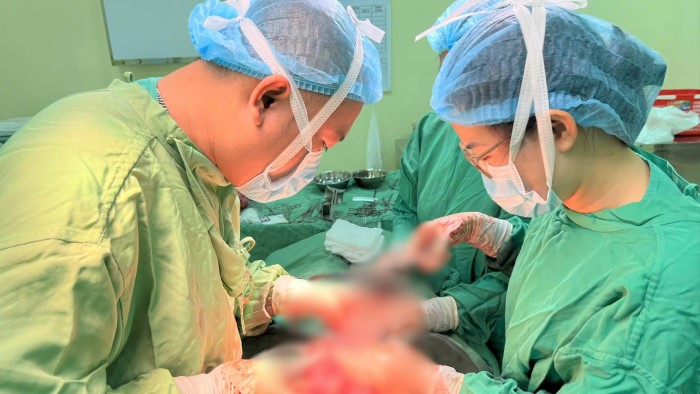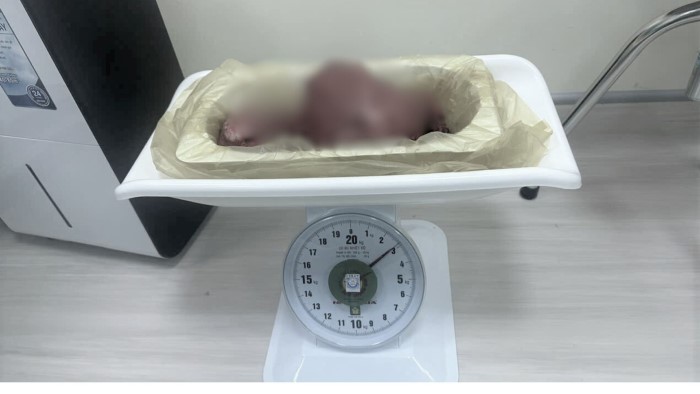
The Obstetrics and Pediatrics Unit (Hospital 199) received female patient T.T.H (36 years old) for examination in severe anemia with unusual signs such as: Green skin, pale mucous membranes, rapid, small vessels 100 times/minute, severe anemia, heavy periods. The results of the clinical examination, the Doctor discovered a large fibromyalgia in the uterus, corresponding to a 36-week pregnancy, with a blood pigment test score of 85 g/l.
Exploiting more history, Dr. Truong Quoc Viet said that the patient had undergone 2 cesarean sections, went to a medical examination and discovered uterine fibroids at a medical facility in Da Nang 6 years ago and was monitored periodically every 6 months.
The doctor diagnosed the patient with a large uterine fibroid tumor, menstrual fibromyalgia complications, severe anemia, and needed early surgery to avoid dangerous complications. Immediately afterwards, a surgical team led by Dr. Truong Quoc Viet was established.

After nearly 2 hours, the doctors performed surgery to remove the fibroid tumor and successfully preserved the patient's uterus. The sample of the post-operative uterine fibroid tumor weighed 3,000 grams, equivalent to a 36-week pregnancy. The success of the surgery was a happy result for the patient because the tumor was released after 6 years of being ill.
Dr. CKII Truong Quoc Viet recommends: Uterine fibroids are a benign, smooth fibroid disease and can only be intervened when there are complications. However, when there are complications such as amenorrhea, hypermenopause, and hypogonadism that are at risk of affecting health or complications caused by compression, women should be examined, consulted, and treated promptly to minimize the risk of affecting their health.
Currently, the patient is stable in terms of post-operative experience and is being monitored in the treatment department.
